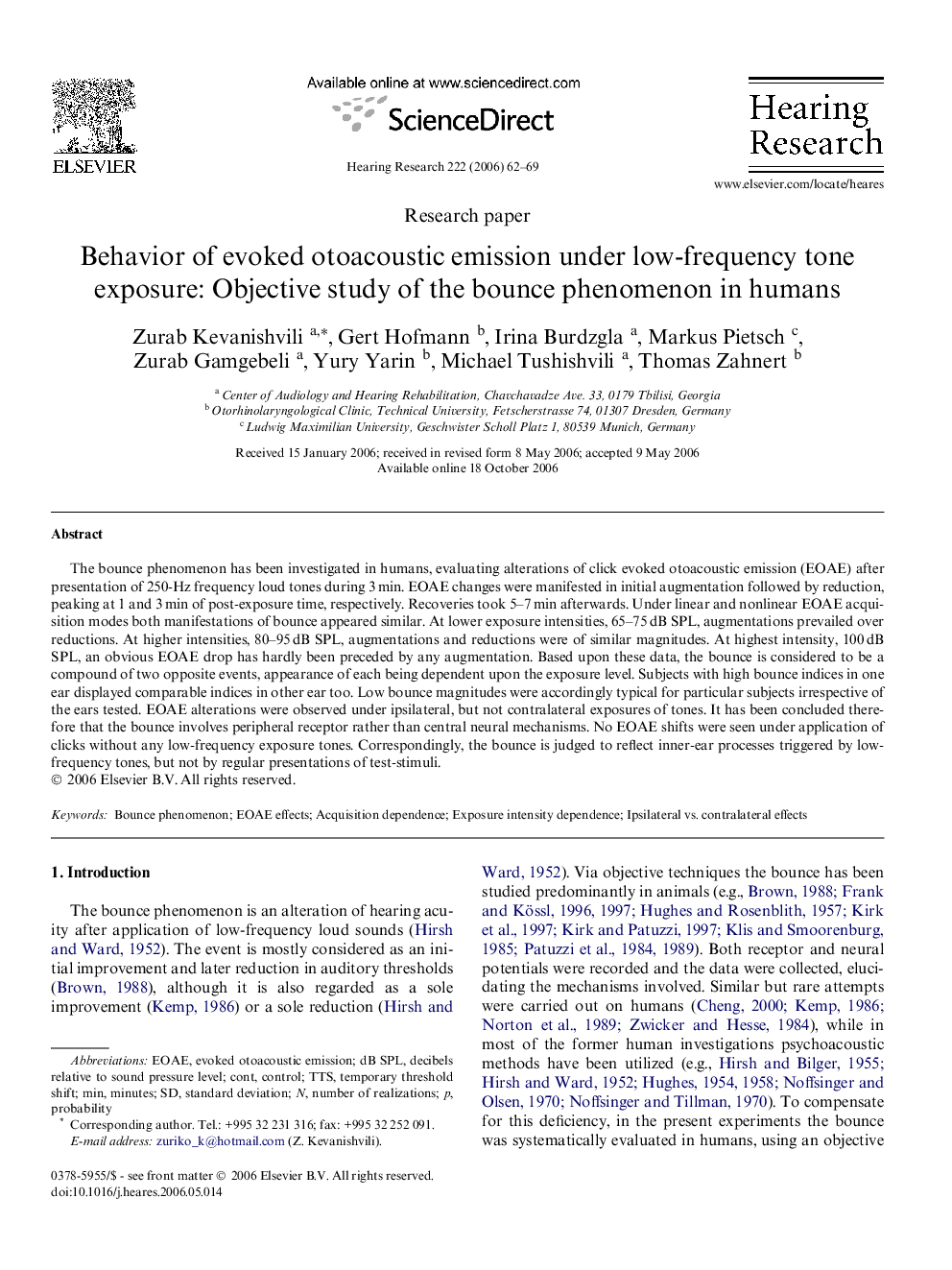| Article ID | Journal | Published Year | Pages | File Type |
|---|---|---|---|---|
| 4356395 | Hearing Research | 2006 | 8 Pages |
The bounce phenomenon has been investigated in humans, evaluating alterations of click evoked otoacoustic emission (EOAE) after presentation of 250-Hz frequency loud tones during 3 min. EOAE changes were manifested in initial augmentation followed by reduction, peaking at 1 and 3 min of post-exposure time, respectively. Recoveries took 5–7 min afterwards. Under linear and nonlinear EOAE acquisition modes both manifestations of bounce appeared similar. At lower exposure intensities, 65–75 dB SPL, augmentations prevailed over reductions. At higher intensities, 80–95 dB SPL, augmentations and reductions were of similar magnitudes. At highest intensity, 100 dB SPL, an obvious EOAE drop has hardly been preceded by any augmentation. Based upon these data, the bounce is considered to be a compound of two opposite events, appearance of each being dependent upon the exposure level. Subjects with high bounce indices in one ear displayed comparable indices in other ear too. Low bounce magnitudes were accordingly typical for particular subjects irrespective of the ears tested. EOAE alterations were observed under ipsilateral, but not contralateral exposures of tones. It has been concluded therefore that the bounce involves peripheral receptor rather than central neural mechanisms. No EOAE shifts were seen under application of clicks without any low-frequency exposure tones. Correspondingly, the bounce is judged to reflect inner-ear processes triggered by low-frequency tones, but not by regular presentations of test-stimuli.
